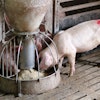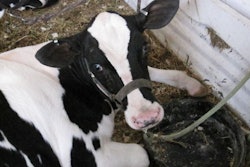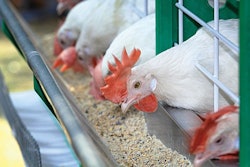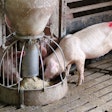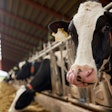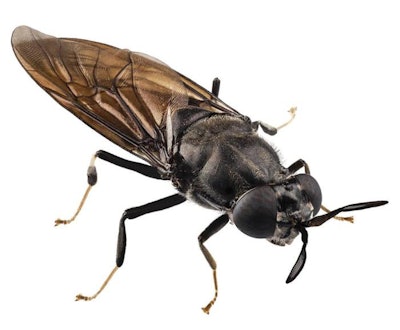
If food waste could be used for insect production, and the resulting protein meal could be fed to livestock, what would be the effects on the environment and food animal production in Europe?
With ever-increasing pressure on global food production, some scientists and policymakers have focused on ways of reducing food waste. As well as making use of precious nutrient resources, this step toward a more circular economy could also mitigate environmental impact.
If food waste could be used as the basis for insect farming, what would that mean for the feed industry, for livestock and grain farmers, and for the environment in the European Union (EU)?
As part of its examination of the future of the region’s agriculture, the European Commission (EC) has explored this potential application of insect farming in “European Union Agricultural Outlook 2020-2030.”
To examine the possible effects, authors of this part of the report considered the scenario that 50% of global food waste is used for the production of black soldier fly larvae by 2030. This amount could feasibly be collected and delivered to insect farms. The current baseline is taken as 15%, with gradual expansion in the sector over the coming decade.
While successfully contributing to the circular economy, insect farming could indirectly lead to increased greenhouse gas (GHG) emissions, the study found. This conclusion may be unexpected. It is suggested that a likely reduction in feed prices may stimulate an increase in overall livestock production in the EU.
Primary products: insect meal and oil
Main products of the process are larvae incorporated in aquaculture feeds, and the extracted oil in biodiesel production. Both of these applications are already permitted in the EU.
Under these conditions, global insect production could yield 23 million metric tons (mmt) of protein meal. This is equivalent to 5.4% of protein meal consumption. Additionally, it will result in 6 mmt of oil in 10 years’ time, which is around 2.5% of world oil consumption.
Meanwhile, domestic production of insect meals within the EU could reach 1.5 mmt by the end of the study period, as well as 400,000 metric tons of oil.
For their calculations, authors of the EC’s report assume prices for the insect-derived products will follow world market prices protein meals and vegetable oils.
Impacts on grain and oilseed markets
Overall, the authors do not expect the growth in the region’s insect farming to change significantly the EU’s self-sufficiency ratio in feed protein.
Under the conditions of the scenario, they explain that the rise in insect meal production will be partially balanced by the forecast decline in the EU area under cultivation of soybeans and other oilseeds. Prices of grain could fall by 5%, and soybeans by as much as 11%.
Rising livestock production
Forecasting a reduction in feed prices led the authors to predict a consequential increase in livestock production in the EU.
Most likely to gain is aquaculture, they suggest. Particularly benefiting are carp, salmon and trout production in the EU. Overall, a 1.1% expansion in the region’s farmed fish output is forecast by 2030, based on increased local production of cheaper insect proteins and oils.
Production of insects does not compete directly with other activities in terms of land resources. However, it could indirectly stimulate livestock production by lowering feed costs. While safety and other sustainability issues still need to be addressed, the authors of this scenario point to a likely increase in greenhouse gas emissions.
Insect meals are only authorized for inclusion in aquaculture feeds in the EU. In the region, food and catering wastes cannot be used as substrates for insect production for poultry and pig diets.
Among the key findings of the EC’s latest Agricultural Outlook report are small but significant changes in feed composition over the next 10 years. Also forecast to evolve are the individual livestock sectors.

